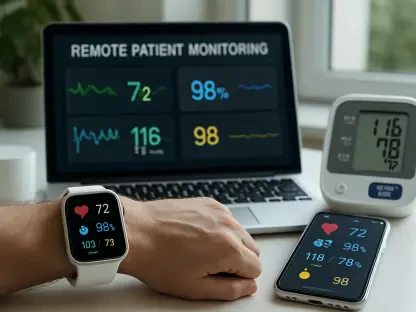Imagine a medical tool so ancient that its origins trace back to Roman times, yet it remains a staple in modern gynecological exams with little change in design over centuries, causing discomfort and anxiety for many women. The speculum, used to visualize the vagina and cervix during pelvic exams, has long been associated with pain, often deterring women from seeking regular screenings and posing a serious public health concern. Many dread the cold metal, the awkward positioning, and the invasive nature of procedures like Pap smears or IUD insertions. This outdated device, while essential for detecting conditions such as cervical cancer, reflects a broader historical neglect of prioritizing patient comfort in this field. Despite its critical role in women’s health care, recent innovations signal a turning point, with redesigned tools and alternative screening methods emerging to address these long-standing issues. This growing movement aims not only to improve the physical experience of exams but also to ensure that more women access life-saving preventive care without fear or hesitation.
Unpacking the Historical Oversight in Speculum Design
The speculum’s history is as old as medical practice itself, with early versions dating back to ancient civilizations. Remarkably, the basic design—two bills that expand to open the vaginal canal—has persisted with minimal updates until very recently. This stagnation is not merely a matter of tradition but a reflection of systemic oversight in women’s health care. For centuries, the focus has been on clinical utility rather than the patient’s experience, often ignoring the discomfort caused by rigid materials and invasive mechanisms. The modern speculum’s development, tied to controversial figures like James Marion Sims in the 19th century, further complicates its legacy, as it was shaped under ethically troubling conditions without anesthesia or consent. This historical context underscores a broader pattern of insufficient funding and attention directed toward improving tools specifically for women’s medical needs, leaving the speculum largely unchanged for far too long.
Delving deeper into this issue, the lack of innovation can be attributed to a persistent undervaluing of women’s health in medical research. Experts in the field have pointed out that other areas of medicine have seen rapid advancements in patient-centered design, while gynecological tools lagged behind. The traditional speculum, often made of cold metal or hard plastic, prioritizes the clinician’s ability to visualize over the patient’s comfort during exams. This imbalance has perpetuated a cycle where discomfort is normalized, and little incentive existed to rethink the tool’s fundamental structure. Only in recent years has there been a shift in perspective, driven by growing advocacy for women’s health equity, pushing for designs that consider both functionality and the human element of medical procedures. This awakening marks a critical juncture in addressing a centuries-old problem with fresh urgency.
The Public Health Impact of Exam Discomfort
For many women, the thought of a pelvic exam evokes a sense of dread, rooted in the physical and emotional discomfort associated with the speculum. The sensation of cold metal, the pressure of expansion, and the vulnerability of the procedure can range from mildly unpleasant to deeply painful, particularly during sensitive exams like Pap smears or IUD placements. Beyond the physical aspect, the psychological toll is significant, with anxiety often building before the appointment even begins. This unease is not a minor inconvenience but a barrier that affects how women engage with essential health care services. The emotional weight of anticipating pain or embarrassment can overshadow the importance of routine checkups, leading many to delay or avoid them altogether, despite knowing the risks of skipping such care.
This reluctance has profound implications for public health, particularly in the fight against cervical cancer, a disease that is largely preventable through early detection. Studies reveal that a substantial number of women in the U.S. are not up to date on their screenings, often citing fear of discomfort as a primary reason. When regular exams are skipped, precancerous changes can go unnoticed, increasing the likelihood of late-stage diagnoses that are harder to treat. The ripple effect is tragic, with thousands of preventable cases and deaths occurring annually due to missed opportunities for intervention. Addressing the discomfort tied to the speculum is not just about improving a single procedure; it’s about dismantling a barrier that hinders access to life-saving preventive care and ensuring that fear no longer stands in the way of health.
Emerging Solutions Through Innovative Designs
In response to decades of dissatisfaction, a wave of innovation is reshaping the speculum to prioritize patient comfort without compromising clinical effectiveness. New prototypes have entered the scene, each with unique features aimed at reducing the invasiveness of pelvic exams. For instance, designs like the Yona incorporate silicone coatings to maintain a more comfortable temperature, while the Lilium introduces a flower-like shape activated by a gentle applicator for smoother insertion. Another notable advancement, the Nella, offers a narrower profile and a quieter locking mechanism to minimize both physical discomfort and the anxiety triggered by jarring sounds. These redesigned tools represent a significant departure from the cold, rigid specula of the past, signaling a shift toward a more empathetic approach in gynecological care that acknowledges the patient’s experience as a priority.
While these innovations are promising, they are not without limitations, as the fundamental challenge of opening the vaginal canal remains. Even with softer materials and refined mechanisms, many of these new designs still rely on an expanding structure, which can cause pressure or discomfort for some patients. Additionally, the effectiveness of these tools in diverse clinical settings is still under evaluation, as providers adapt to unfamiliar designs. Nevertheless, the push for better specula reflects a broader cultural change in medicine, where patient feedback is increasingly valued in shaping tools and procedures. By addressing both the tangible and psychological barriers of pelvic exams, these advancements aim to encourage more women to participate in regular screenings, potentially transforming outcomes in women’s health over time.
Navigating Commercialization and Access Challenges
As redesigned specula make their way to market, a critical conversation emerges around who can access these improved tools and at what cost. Some companies are marketing their innovations as premium products, complete with self-care extras, but often at a price point that remains out of reach for many. Unlike traditional speculum exams, which are typically covered by insurance under U.S. law for cervical cancer screenings, these newer options frequently require out-of-pocket payment. This financial barrier raises concerns about creating a two-tiered system where only those with disposable income can afford a more comfortable experience, while others must endure the standard, less tolerable tools. The commercialization of such medical devices prompts a deeper examination of equity in health care delivery.
Beyond cost, there’s also the question of whether these redesigned specula are necessary for the majority of patients. Many women, while not enthusiastic about pelvic exams, manage to tolerate traditional specula without significant distress. This reality fuels debate over whether resources should focus on boutique solutions or broader systemic improvements that benefit all. Providers and health advocates are grappling with how to balance the excitement of innovation with the need for inclusive access, ensuring that advancements don’t inadvertently widen existing disparities. The challenge lies in integrating these new tools into standard practice in a way that prioritizes fairness, perhaps through insurance coverage or subsidized options, so that comfort in gynecological care becomes a universal standard rather than a luxury.
Exploring Alternatives to Traditional Speculum Use
Parallel to redesigning the speculum, a groundbreaking shift is underway with the rise of alternative screening methods that could lessen or eliminate the need for the tool altogether. Self-collection kits for HPV testing, the primary cause of cervical cancer, have gained approval for use in clinical settings and even at home. These kits empower women to perform their own vaginal swabs, either under supervision or independently, before sending samples to labs for analysis. Research indicates that such self-administered tests are often as accurate as clinician-performed Pap smears in detecting precancerous changes, offering a less invasive option for those who find traditional exams unbearable or inaccessible due to logistical constraints like work or childcare.
While these alternatives hold immense potential, they are not a universal solution and come with their own set of hurdles. Cost remains a significant barrier, as some kits are priced beyond what many can afford without full insurance coverage, though efforts are underway to address this gap. Additionally, self-collection may not be suitable for everyone, particularly for patients with a history of abnormal results who require direct visualization of the cervix by a clinician. Despite these challenges, the advent of such methods represents a transformative trend toward patient autonomy, aligning with broader movements in health care to decentralize services and put control back into the hands of individuals. This shift could redefine how cervical cancer screenings are approached, making them more approachable for diverse populations.
Paving the Way for Patient-Centered Progress
Reflecting on the journey of the speculum, it’s evident that past oversights in design sparked a cascade of challenges, from patient discomfort to reduced screening rates for preventable diseases like cervical cancer. Innovators and health care providers have taken bold steps to confront these issues head-on, introducing redesigned tools with softer materials and quieter mechanisms that ease the burden of pelvic exams. Simultaneously, the emergence of self-collection kits for HPV testing has offered a lifeline to those who struggle with traditional methods, broadening the reach of vital screenings. These efforts collectively mark a pivotal shift toward prioritizing the patient’s experience in women’s health care.
Looking ahead, the focus must remain on actionable solutions to ensure these advancements benefit all, not just a select few. Advocacy for insurance coverage of new specula and self-testing kits stands as a crucial next step, alongside continued research to refine these tools for diverse needs. Health systems should also invest in training clinicians to adopt innovative methods seamlessly while addressing concerns like infection risks with patient-provided devices. By fostering collaboration between innovators, providers, and policymakers, the path forward can lead to a future where discomfort no longer deters women from seeking care, and equitable access to comfortable, effective screenings becomes the norm.









